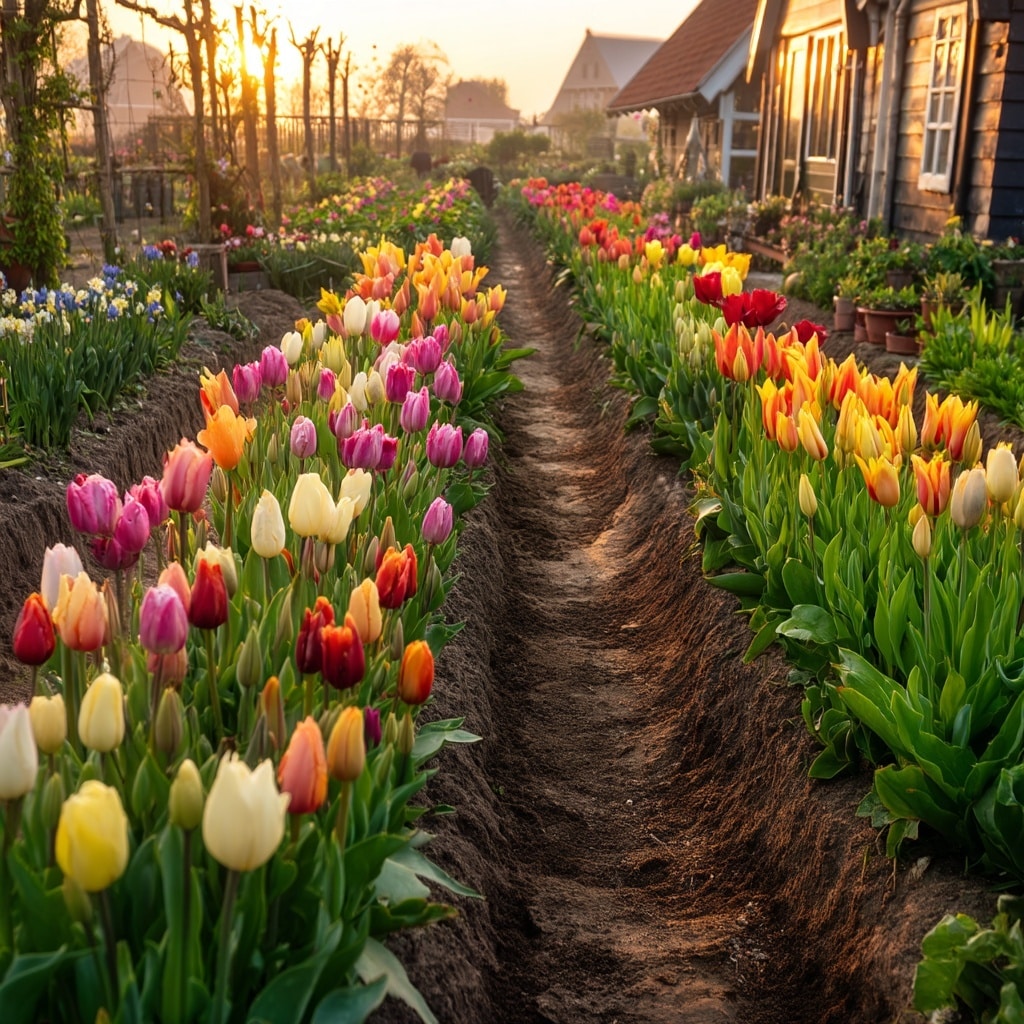The tulip is a classic springtime flower known for its vivid colors, elegant shape, and timeless charm. Belonging to the Tulipa genus, tulips are part of the lily family and include around 100 species, all originally native to Central Asia and Turkey. Today, they’re among the most popular bulbs for temperate gardens worldwide. Whether you’re planting a small backyard bed or planning a full seasonal display, knowing how to grow tulips in your garden can make all the difference in creating bold, long-lasting blooms that return each year with beauty and grace.
Table of Contents
The Rich History of the Tulip
The tulip has a story as vibrant as its petals. Cultivation began over a thousand years ago in Persia (modern-day Iran), where the flower held symbolic value and was celebrated in poetry and art. Its popularity grew across the Ottoman Empire, eventually becoming an emblem of beauty and nobility.
In the 16th century, tulips made their way to Europe, introduced by Augier Ghislain de Busbecq, an ambassador to Turkey. He sent tulip bulbs to Austria, which sparked the flower’s horticultural journey across the continent.
One of the most fascinating chapters in tulip history was Tulip Mania in the Netherlands (1633–1637). During this period, tulip bulbs became so prized that people traded them for land, homes, and fortunes—until the market crashed. This event remains one of the earliest recorded economic bubbles.
By the late 1500s, tulips had made their way into academic gardens, thanks to botanists like Carolus Clusius, whose collection in Leiden laid the foundation for tulip breeding across Europe.
Physical Features of the Tulip
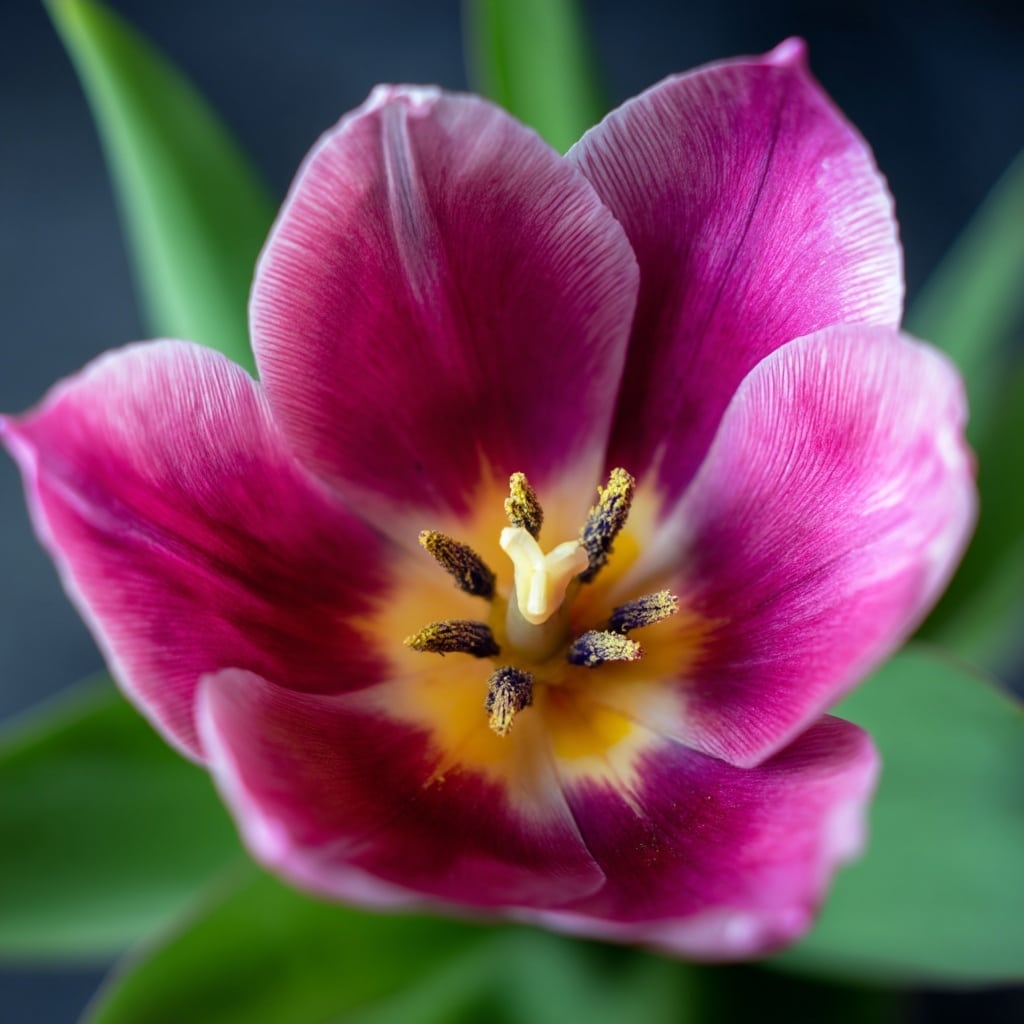
The tulip is a spring-blooming perennial that starts life as a bulb tucked beneath the soil. In early spring, it sends up two to six bluish-green leaves, typically clustered at the base. These thick, waxy leaves store energy to support the flower’s growth and next year’s bloom.
Atop its sturdy stem, the tulip presents a single bell-shaped flower, made up of six petal-like segments. These are technically three petals and three sepals, but they appear almost identical. The flower’s center holds six stamens and a distinctive three-lobed stigma, which is where pollination happens.
🌈 Colors and Patterns
Tulips bloom in nearly every shade except true blue. You’ll find:
- Pure white and creamy yellows
- Bright reds and oranges
- Deep purples, even near-black tones
- Multi-colored or “broken” tulips with streaks and flames of color, caused by a harmless virus
The diversity in color and shape is one reason tulips remain a garden favorite—they bring both bold drama and subtle elegance to any spring display.
Types of Tulips and Their Classification
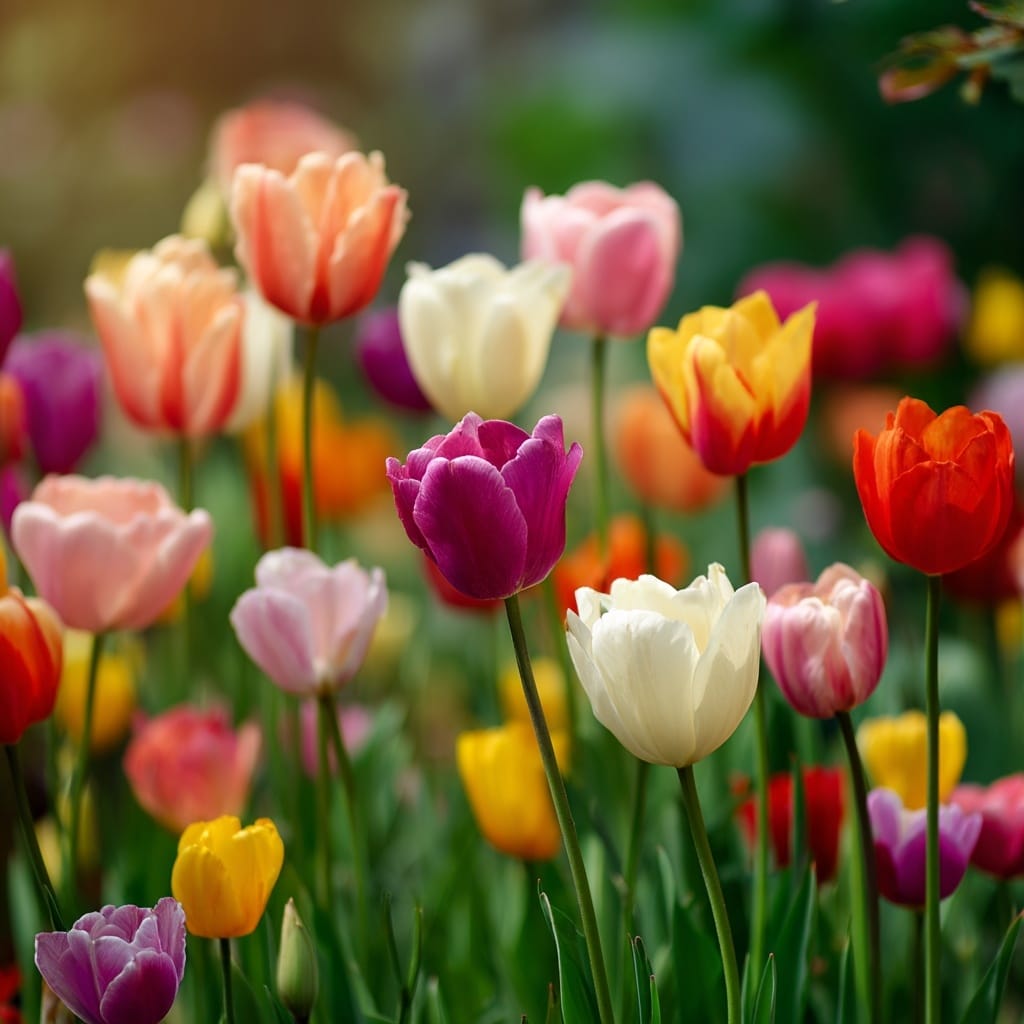
With thousands of varieties available, the tulip offers something for every garden style. Most modern cultivars trace back to the species Tulipa gesneriana, but breeders have expanded far beyond, creating a wide array of flower shapes, heights, and bloom times.
🌼 Classification by Bloom Time
Tulips are generally grouped by when they bloom in the season:
- Early Bloomers:
Include single early and double early tulips. These compact types bloom in early spring and hold up well in wind and rain. - Mid-Season Varieties:
Darwin hybrids and Mendel tulips offer tall stems and classic cup-shaped flowers—perfect for borders and cut-flower arrangements. - Late Bloomers:
These include lily-flowered, parrot, double late, and cottage tulips. They boast dramatic shapes and rich, late-season color.
Wild and Endangered Species
While cultivated tulips are abundant, many wild species are under threat due to habitat loss and climate change. Examples include:
- Lady Tulip (Tulipa clusiana)
- Albanian Tulip (T. albanica)
- Woodland Tulip (T. sylvestris)
Several of these are listed as critically endangered, making conservation and mindful cultivation increasingly important.
Growing Tulips: Conditions and Care Tips
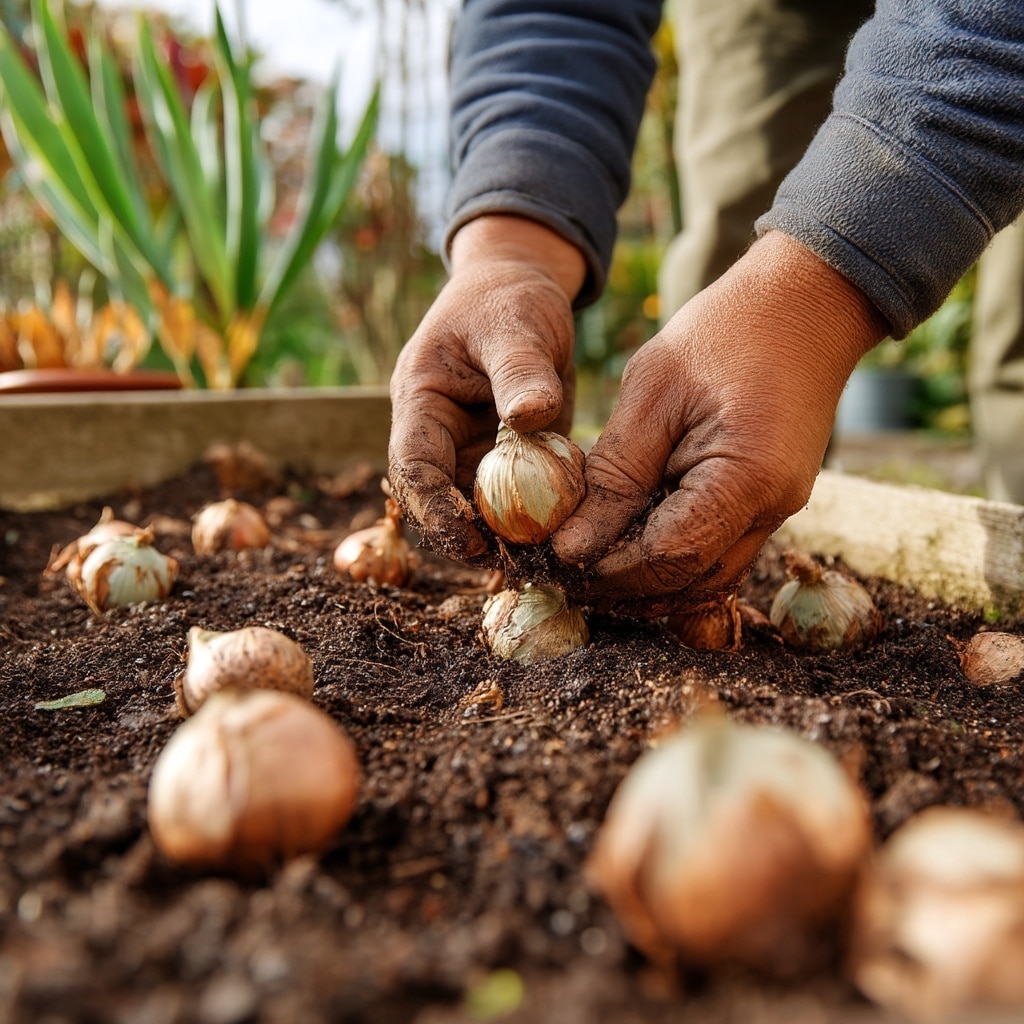
Planting and caring for a tulip is surprisingly simple when you understand its seasonal rhythm and soil needs. With just a few steps, you can enjoy a vivid, low-maintenance bloom year after year.
🕳️ When and How to Plant
- Plant tulip bulbs in autumn, about 6–8 weeks before the ground freezes.
- Set bulbs 4 to 8 inches deep, pointed side up.
- Space bulbs 4 to 6 inches apart to allow airflow and prevent rot.
🌍 Soil and Sunlight
Tulips thrive in well-drained loamy soil enriched with compost. Avoid heavy clay or wet spots, as excess moisture leads to bulb rot.
- Ideal pH: Neutral to slightly acidic
- Sunlight: Full sun (at least 6 hours per day) for best blooms
💧 Watering and Feeding
Water bulbs deeply after planting. Once established, tulips are drought-tolerant and require minimal watering unless the season is unusually dry.
- Fertilize lightly when foliage emerges using a balanced bulb fertilizer
- Avoid over-fertilizing—it can damage the bulb
🍂 After Bloom Care
Once flowers fade:
- Deadhead spent blooms to prevent seed production
- Allow the leaves to yellow naturally—this stores energy in the bulb
- In warmer climates or commercial gardens, bulbs are often lifted and stored after foliage dies back
Store bulbs in a cool, dry, well-ventilated space and replant them in fall for a strong showing next spring.
Conclusion
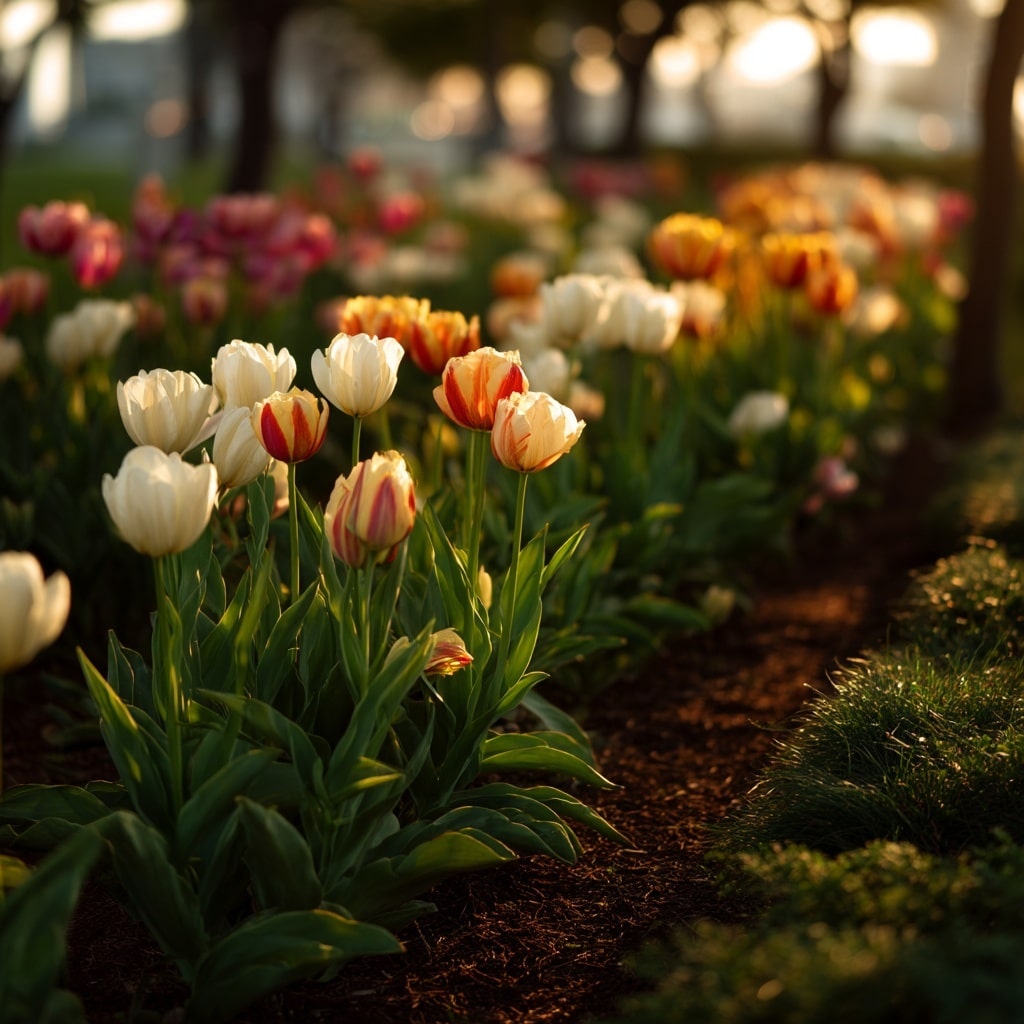
The tulip is a spring staple that brings bold color, rich history, and reliable blooms to any garden. With just a bit of seasonal planning and proper soil preparation, you can enjoy stunning displays year after year. Whether you’re growing a classic Darwin hybrid or a delicate wild species, tulips offer timeless beauty with minimal upkeep—making them a favorite for gardeners of all skill levels.

